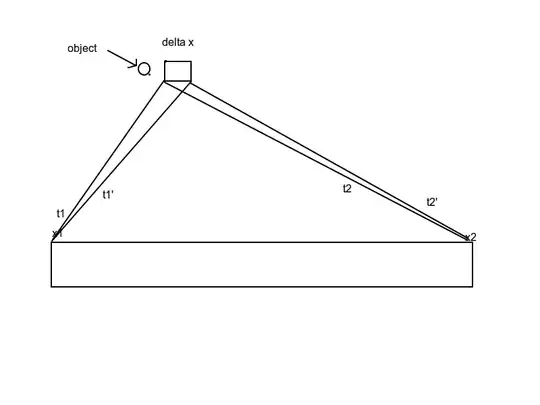I am trying to read of synchronization of two clocks in same inertial frame in special relativity. Suppose we have two synchronized clocks in an inertial frame placed at positions $x_1$ and $x_2$ in that frame. Suppose two observers at $x_1$ and and $x_2$ try to measure speed of some object moving in between $x_1$ and $x_2$(not at the midpoint or any close) with a constant speed. Now both observers, watch the object travel the distance $ \Delta x$. Let the object be closer to $x_1$. The observer at $x_1$ records times at which the object enters the $\Delta x$ region and another when it leaves the region. Lets call them $t_1$ and $t'_1$ and similarly the observer at $x_2$ records $t_2$ and $t'_2$.

Now the time difference between $t_1$ and $t'_1$ is should not be same as the difference between $t2$ and $t'2$ since the light travels at a finite speed. So the velocities as measure by $x_1$ and $x_2$ observers should be different because the time intervals measured by them are different. This would imply both the observers measure different speeds. But I am wondering how is this possible? How can an object have two different speeds in same inertial frames? Am I missing something?
(PS: sorry for bad figure)